Vivo Nex S Review: The Future Is Here and it’s Flawed
Vivo's flagship Nex S has made headlines for its in-display fingerprint sensor, pop-up selfie camera and bezel-free design. But for all its innovations, this phone is far from perfect.
Why you can trust Tom's Guide
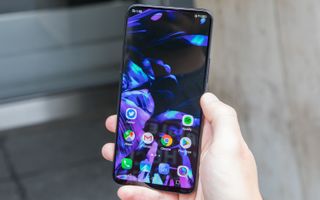
One day in the not-too-distant future, all phones will look like the Vivo Nex S. But until then, the Chinese manufacturer and subsidiary of BBK Electronics — the same company that owns OnePlus — can enjoy the recognition for being the first to beat the likes of Apple, Samsung and Google to a couple of major breakthroughs in smartphone design.
Like virtually every other flagship today, the Nex S has next to no bezels. But unlike those phones' manufacturers, Vivo hasn't relied on a notch to get there, nor has it relocated the fingerprint sensor to make room for more screen space. Instead, Vivo embedded the scanner right into the Nex S' 6.6-inch OLED display. That's a feature likely to appear on next year's leading smartphones in the U.S., but Vivo beat them to the punch by almost a year.
For all of Vivo's innovations, though, the Nex S is not available on this side of the Pacific. And even if you were to get your hands on one, you'd find an experience not quite built for Western users, and a quirky take on Android that, love it or hate it, carries a steep learning curve. The Nex S is as rough around the edges as exotic high-end smartphones come, and yet it still leaves an indelible impression.
Price and Availability
The Nex S is actually the more premium variant of two devices that Vivo has launched in its native China and rolled out to Russia, Malaysia, Taiwan and India. The Nex S features a Snapdragon 845 processor and 8GB of RAM, while the more midrange Nex A features Snapdragon 710 silicon and 6GB of RAM. Neither device is available stateside, though the Nex S retails for about 4498 yuan, which is approximately $660.

Interestingly, however, the Nex S is wired to support most GSM bands. If you're dedicated enough, you could import the Nex S and run the phone on T-Mobile, AT&T, Cricket or MetroPCS. However, there's no guarantee the device will work flawlessly — your carrier is unlikely to offer too much help if it doesn't — and it may be better suited for some networks than others.
Furthermore, you have to be careful which version of the Nex S you buy. While our international unit came with the Google Play store and services installed, those sold in China do not. Without that key software, you’ll only be able to download apps common in Asia. And while you could always go ahead and sideload the Play Store after the fact, certain apps still may not function as intended — and that’s something importers will need to be mindful of.
Given those limitations, it might seem strange that we've decided to review the Nex S. Typically, we tend to avoid handsets that aren't officially available to U.S. buyers. However, we feel the technical advances in this case are so great — and likely to appear on increasingly more products down the line — that we chose to evaluate them. If you ultimately decide to pick up a Nex S through an online retailer that imports overseas phones, be sure to do your due diligence beforehand. And definitely don't take the plunge without looking at our dedicated buying guide first.
Design: The way forward
No smartphone in recent memory, not even the iPhone X, elicits quite the reactions Vivo's latest phone does. No matter whom I showed the Nex S to, they were fascinated by the device's pop-out, front-facing camera.
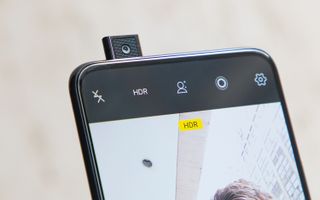
A motor drives the Nex S' selfie cam out of the top of the phone. So, there's no need for a notch at the top of the display, and you won't find any bezels on three of the sides. (The "chin" on the bottom of the phone remains a bit thicker than the rest, to house the display driver.)
Your appreciation of Vivo's approach will mostly depend on how strong your distaste for notches is. If you hate what you've seen on the iPhone X, LG G7 ThinQ, OnePlus 6 and others, this will be precisely the design breakthrough you've been waiting for. If you don't mind notches, you might call Vivo's pop-out camera a shameless attempt at over-engineering a solution to a "problem" most people can actually live with.
No matter whom I showed the Nex S to, they were fascinated by the device's pop-out, front-facing camera.
The pop-out camera does create concerns for durability, but Vivo assures us that the mechanism can withstand 300,000 cycles without failing. I'm more worried about what might happen if I were to drop the phone square on the housing. But in regular usage, I'm pleased to say that the system works quite well. It's reliable and reasonably fast, and I never had a single issue with the lens taking too long to deploy.
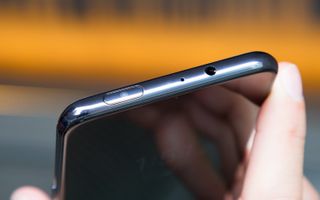
What's more, the setup gives you that uninterrupted view of the top of the display that no other bezel-free phone can provide. There isn't even an earpiece to spoil the party, as the Nex S utilizes a cutting-edge conductive audio system to convey sound through the glass itself. It's a solution that, much like the camera, works surprisingly well in practice.
Unfortunately, the same can't quite be said of the Nex S' built-in fingerprint sensor. The scanner does take a hair longer than conventional alternatives, but that's really not the issue. Rather, the bigger problem is that it's really finicky. A third of my attempts to unlock our unit with my thumb failed, sometimes because my placement was off and other times because I applied too much or too little pressure.
The Nex S' built-in fingerprint sensor can be really finicky.
In time, you'll likely get a rhythm for what the sensor is asking for, but even then, it's never an effortless experience. The orientation needs to be just so. The industry has made considerable strides, but the technology isn't quite reliable enough for prime time yet. And after using the sensor on the Nex S, I came away with a better sense of why Apple and Samsung have yet to incorporate the feature into their phones.

Once you get past those buzzworthy features, there's really not much to say about the Nex S from a design standpoint. While Vivo clearly lavished a great deal of attention on the camera, fingerprint sensor and bezels, the materials and overall fit and finish feel like afterthoughts.
Admittedly, the back of the Nex S pulls off a nice trick under light, reflecting rainbow spectrums beneath its glass enclosure. But from most angles, in most conditions, it's just another gray slab with a glossy, slippery feel and vertically mounted dual cameras that ape those of the iPhone X.
Display: Serviceable OLED
The front of the Nex S is dominated by a 6.6-inch OLED display that delivers punchy hues and deep blacks. The vividity really enhances the lack of bezels — if this were an LCD panel, with its comparatively washed-out colors, the design would be all for naught.

However, the Nex S' screen falls short of the best in the flagship class, for two reasons. First, with a peak brightness of 470 nits, it's just barely ahead of the average smartphone's 466-nit rating. While the Nex S' display doesn't look dim by any means, other devices, including the 630-nit Galaxy S9+, handily beat it.
Second, Vivo opted for full HD+ resolution on the Nex S' screen, not unlike the 6.3-inch OnePlus 6. Because the Nex S' display is considerably larger than you're likely to find on any other device, though, its individual pixels can be seen much more easily. To put things into perspective, the Nex S' panel has a density of 388 pixels per inch, compared with 529 ppi on the 6.3-inch Galaxy S9+ and its higher-res 1440p screen.
The lower density has a detrimental effect on text, which doesn't look quite as sharp on the Nex S as you might find on other flagships. Neither does video, as I found watching the trailer for the upcoming Venom movie. The symbiote's inky-black skin didn't glisten with the same luster on Vivo's device as it did on the Galaxy S9+.
MORE: OLED Killer? Apple Has Big Plans for Micro-LED Screens
While the Nex S could stand to gain some pixels, what's already there doesn't disappoint. The device reproduced 250 percent of the sRGB color space in our testing, which is ever so slightly more than the OnePlus 6's 240-percent result. That translates to colors that tend to be a bit more saturated than what you'll find on other phones.
In terms of color accuracy, the Nex S' panel registered a score of 0.50 in Delta-E testing, where numbers closer to zero are better. It's common to see handsets with the best displays notch a rating within the 0.20-to-0.40 range. While the Nex S falls just outside that range, it's not something you're likely to notice.
Camera: Better than specs suggest
You wouldn't expect much from the Nex S' cameras, given their specs. On the back, you'll find a 12-megapixel main lens with an f/1.8 aperture, assisted by a 5-MP, f/2.4 shooter for depth effects.
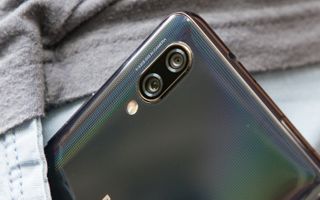
It's a humble pairing on paper, but the results are far better than you'd expect. That's especially true of indoor and dimly lit scenes, like the example below.
The Nex S more than held its own against the Google Pixel 2 XL in our first comparison, where both phones tapped their high-dynamic-range modes to deliver balanced still-life-style shots of objects on a windowsill. The Pixel's photo is a fair bit sharper, and the warmer tones of the building in the background are more realistic. However, the Nex S produced a photo that was every bit as bright, with punchier colors in the wood grain of the radio and a slightly more intense shade of red on the terra-cotta planter.
Unfortunately, the Nex S was unable to follow up its impressive debut when it came to shooting in Portrait Mode. I didn't turn any face-smoothing features on, but I suspect the Nex S' built-in AI scene recognition went ahead and applied such a filter anyway. The result is a super-blurry portrait that muddies every detail of my colleague Jorge's face. Even his shirt seems out of focus, which becomes abundantly clear when you compare it to the same scene through the lens of the Pixel 2 XL.
For this particular comparison, I enlisted the Huawei P20 Pro, our favorite handset for shooting really, really dark scenes. The P20 Pro's Night Mode collects data from all three of the phone's rear lenses and keeps the exposure open for a full 4 seconds to let as much light in as possible.
The Nex S' cameras seem modest on paper, but its results are far better than you'd expect.
The Nex S can't compete with those features, but the results in low light are admirable. This room was pitch-black, and the Nex S still pulled out a little more color and a little less noise than the P20 Pro's rendition. Of course, the image from Vivo's phone is considerably dimmer, but given how unfavorable the conditions were (not to mention how good the P20 Pro is), I'd still consider it a victory.
Finally, the Nex S' pop-out 8-MP camera captured a suitably bright selfie, though it brightened the complexion of my skin in an unnatural way. Some users may be looking for that from their front-facing lenses, but if it's realism you want, the Pixel 2 XL still outshines Vivo's attempt with greater clarity and authentic colors.
Performance: Among Android's fastest
Thankfully, the Nex S is more than a pretty face — it's quite powerful under the hood, too. Armed with a Snapdragon 845 processor and 8GB of RAM, the Nex S is among the speediest Android phones we've tested all year, right up there alongside the OnePlus 6.
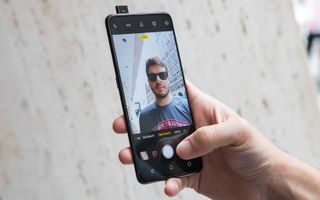
This device isn't easily taxed, which became evident in daily usage as well as benchmarks. On Geekbench 4, which measures overall performance, the Nex S managed a score of 9,054, just below the 9,098 from the 8GB version of the OnePlus 6. A similar story played out in graphics performance, where the Nex S totaled 4,708 in 3DMark's Sling Shot Extreme OpenGL ES 3.1 test, almost keeping pace with OnePlus' bargain flagship, which scored 5,124.
MORE: Hands On: Android P Already Beats iPhone X in Beta
While I didn't necessarily enjoy my time with Vivo's Funtouch OS — more on that later — the user interface didn't introduce any lag in my experience, with one exception. Although split-screen performance was fine, animations played out sluggishly when I dragged the dividing line to alter the relative sizes of the windows. That's a bit unexpected for such a powerful device and something you don't encounter in most flagships, even older ones like the Pixel 2 XL.
Battery: Huge capacity, predictable results
The 4,000-mAh battery inside the Nex S lasted exactly 13 hours in our testing, where the device streamed web pages endlessly over T-Mobile's LTE network until it ran out of juice.
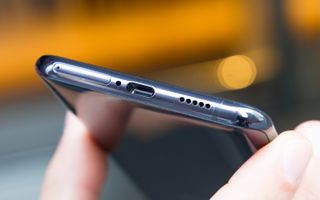
That's impressive, but there are a couple of caveats. First, it's important to remember that the Nex S supports only half of T-Mobile's frequency bands: 2, 4 and 5. Those happen to be the bands T-Mobile relies on most, and the lack of complete support could have an untold effect on battery life. Second, Vivo's aggressive power-management habits forced us to use a third-party app just to keep the screen on during page loads, which hasn't been the case with any other smartphones we've run through our test.
Those asterisks aside, 13 hours is quite good for any phone. At the moment, our flagship leader in battery life is Huawei's Mate 10 Pro, which delivered 14 hours and 39 minutes with a battery that has exactly the same capacity as the one inside the Nex S. However, the Nex S needs to power a significantly larger screen, which complicates things.
Software: Not so "fun"
Vivo's Funtouch OS is built off of Android 8.1 Oreo. And, like so many custom Android front ends from Chinese phone makers, Funtouch attempts to distance itself from the traditional experience as much as possible.
It's not uncommon for manufacturers to modify Google's software to make it look and feel more like iOS, but Vivo's transformation goes the furthest we've seen in a while. For example, quick toggles and the volume and brightness sliders have been moved into a panel revealed with a swipe up from the bottom, just like the iPhone's Control Center. (Vivo even calls this feature Control Center, shamelessly.)
MORE: Best Chrome Apps - Top Free and Paid Apps for Your ...
And that's not all. There's no app drawer, and a swipe down anywhere on the home screen takes you to a system-wide search pane. Besides the iOS similarities, Vivo has added quite a large suite of apps to Funtouch that can't be uninstalled, including a link to the company's website, as well as another app store for Indian customers in addition to the Google Play store our unit came with.
You can't take Vivo to task for not preparing Funtouch for U.S. users, as the company doesn't sell products here. But it's hard to recommend a device with so many software idiosyncrasies.
It's not uncommon for manufacturers to modify Google's software to make it look and feel more like iOS, but Vivo's transformation goes the furthest we've seen.
To give credit where it's due, the company has made an attempt to smooth things out. For example, Vivo's Chinese-language Jovi assistant was replaced with Google Assistant on our international unit, and the left button originally intended for Jovi was remapped accordingly. However, Jovi still appears in the Settings menu even though it's not technically present.
There are lots of quirks like that in Funtouch — from how unnecessarily difficult Vivo makes it to use third-party launchers to the separate keyboard the system insists on using whenever you enter a password. You quickly get the feeling that Funtouch operates on a fundamentally different assumption of the way people use their phones in other parts of the world, and it doesn't really jibe with Android's reputation for customizability here. And too often, the result is frustrating.
Bottom Line
The Vivo Nex S is the kind of device you want so desperately to love, because it will actually bring about real change to smartphones. Other phone makers say their products are innovative, but the Nex S has tangible advancements that prove it.
The problem is that the Nex S is groundbreaking enough to earn a spot on our collective radars, but it isn't rounded enough to recommend as a daily driver. Much of that has to do with the software, which is, at best, occasionally head-scratching and, at worst, incomplete. But even if the Nex S felt as satisfying to use as it looks, importing it is a headache, and it may not even work properly depending on your network and location.
Those are tough compromises to bear, even if the Nex S' notch-less, edge-to-edge screen; nifty selfie cam; and in-display fingerprint sensor foretell the future we're tired of waiting for. The Nex S may turn heads now, but once successive generations of iPhones, Pixels and Galaxy handsets catch up to what Vivo has done here — and bring with them a certain level of polish — you have to wonder if anyone will remember the first.
Credit: Tom's Guide
Sign up to get the BEST of Tom’s Guide direct to your inbox.
Upgrade your life with a daily dose of the biggest tech news, lifestyle hacks and our curated analysis. Be the first to know about cutting-edge gadgets and the hottest deals.
Adam Ismail is a staff writer at Jalopnik and previously worked on Tom's Guide covering smartphones, car tech and gaming. His love for all things mobile began with the original Motorola Droid; since then he’s owned a variety of Android and iOS-powered handsets, refusing to stay loyal to one platform. His work has also appeared on Digital Trends and GTPlanet. When he’s not fiddling with the latest devices, he’s at an indie pop show, recording a podcast or playing Sega Dreamcast.
